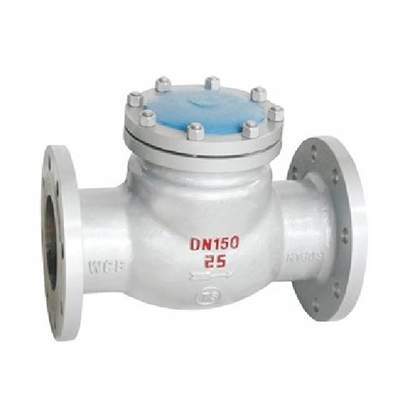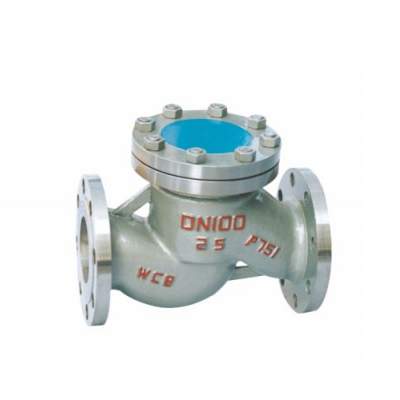Welcome to My Blog!
Before we dive into the content, if you’re interested in our products or have any questions, please feel free to visit our Contact Us page on the website. Our team is ready to assist you with inquiries, orders, or any support you may need.
Now, let’s get started on our journey together. I hope you find the content here insightful, engaging, and valuable.
Small check valves are essential components in various fluid systems, designed to allow flow in one direction while preventing backflow. They are widely used in residential water systems, industrial pipelines, pneumatic systems, and chemical processes. These valves protect pumps, piping, and other equipment from damage caused by reverse flow, ensuring system efficiency and safety. Whether you are an engineer, maintenance professional, or a DIY enthusiast, understanding small check valves can help you select, install, and maintain them effectively. This comprehensive guide explores the types of small check valves, their working principles, installation tips, common issues, comparisons, and buying recommendations.
What Are Small Check Valves and How Do They Work?

Small check valves are mechanical devices that automatically prevent the reverse flow of fluids. Their compact size makes them suitable for pipelines with limited space, microfluidic systems, and specialized industrial applications.
The working principle is simple yet effective: when fluid flows in the intended direction, the valve opens, allowing passage. If the fluid tries to flow backward, the valve closes immediately, preventing backflow. This automatic mechanism protects pumps, compressors, and other equipment from potential damage, reduces contamination risk, and helps maintain system pressure.
Common applications of small check valves include:
- Residential plumbing and water supply lines
- Irrigation systems and water pumps
- Hydraulic and pneumatic circuits
- Chemical processing and laboratory systems
- Fuel and oil lines in industrial machinery
By preventing reverse flow, small check valves increase system reliability and reduce maintenance costs, making them indispensable in many applications.
Types of Small Check Valves
Small check valves come in several types, each optimized for specific applications and fluid characteristics:
Swing Check Valves:
These valves feature a swinging disc that moves freely to allow forward flow and swings back to prevent reverse flow. Swing check valves are suitable for low-pressure systems and are commonly used in water supply pipelines, HVAC systems, and drainage networks. Their design ensures minimal pressure drop and long service life.
Spring Check Valves:
Equipped with a spring mechanism, these valves close automatically when the flow stops. Spring check valves are compact, fast-acting, and ideal for high-pressure or rapid fluid flow applications, such as industrial chemical lines and pneumatic systems.
Ball Check Valves:
Ball check valves use a ball that moves against a seat to block backflow. They are simple in design, lightweight, and effective for small pipelines, fuel systems, and chemical applications.
Material Variants:
- Stainless Steel: Offers excellent corrosion resistance, high durability, and compatibility with aggressive chemicals. Suitable for industrial, marine, and high-pressure applications.
- Brass: Cost-effective, ideal for potable water, low-pressure systems, and general residential use.
- Plastic (PVC, CPVC): Lightweight, corrosion-resistant, and ideal for chemical or corrosive environments.
Choosing the right type and material is essential for performance, durability, and long-term cost efficiency.
How to Install Small Check Valves Correctly
Proper installation ensures optimal performance and prevents operational problems:
Step-by-Step Installation:
- Confirm the flow direction marked on the valve body.
- Prepare the pipeline by cleaning debris or rust from connection points.
- Install the valve inline with the flow using the correct connection type (threaded, flanged, or welded).
- Tighten fittings carefully to avoid damage to the valve body or threads.
Orientation and Positioning Tips:
- Most small check valves are designed for horizontal or vertical installation. Ensure the internal disc, ball, or spring mechanism moves freely without obstruction.
- Avoid installing valves in positions where sediment or debris can accumulate and hinder proper operation.
Safety Precautions:
- Depressurize the system before installation to prevent injury or damage.
- Wear appropriate protective gear when working with chemical or pressurized systems.
- Verify proper alignment and secure fittings to prevent leaks.
Correct installation not only extends the valve’s service life but also ensures smooth operation and reduces maintenance needs.
Common Problems and Maintenance Tips for Small Check Valves
Although small check valves are generally low-maintenance, several issues can arise over time:
Leaks and Backflow:
- Caused by worn seals, debris, or improper installation.
- Preventive measures include regular inspection, cleaning, and timely replacement of seals or valve components.
Corrosion and Material Wear:
- Metal valves can corrode, especially in chemical or saltwater environments.
- Use appropriate material selection and periodic inspection to detect early signs of corrosion.
Debris and Blockage:
- Accumulation of dirt or sediment can prevent proper valve closure.
- Regular cleaning and filtration upstream of the valve can prevent clogging.
Maintenance Tips:
- Inspect valves at regular intervals based on system usage and fluid type.
- Replace valves showing signs of wear or leakage promptly.
- Keep spare valves and seals on hand for critical systems to minimize downtime.
Proper maintenance ensures reliability, reduces the risk of system failure, and prolongs the operational life of the valve.
Small Check Valves vs Other Valves
Choosing the correct valve type is critical for system performance:
Small Check Valves vs Ball Check Valves:
- Ball check valves are simple and compact, suitable for low-flow systems.
- Swing or spring small check valves handle higher flow rates and provide faster closure in certain applications.
Small Check Valves vs Swing Check Valves:
- Swing valves operate smoothly in low-pressure systems but may respond slower to sudden backflow.
- Spring valves provide faster closure, making them suitable for high-speed flow systems.
Other Considerations:
- System pressure, fluid type, and installation space should guide valve selection.
- Comparing valve performance and durability helps prevent unnecessary maintenance and operational issues.
How to Choose the Right Small Check Valve
Selecting the right valve involves careful evaluation:
Pressure and Flow Rate:
- Ensure the valve can withstand system pressure and maintain proper flow without leakage.
Material Selection:
- Stainless steel for aggressive chemicals and high-pressure applications.
- Brass for residential or low-pressure water systems.
- Plastic for corrosive or lightweight applications.
Application Type:
- Industrial systems often require robust, high-performance valves.
- Residential or irrigation systems may rely on standard models.
Pipeline Size Compatibility:
- Match valve size to pipeline diameter for optimal performance and minimal pressure drop.
Additional Tips:
- Consider high-temperature resistance for hot water or steam systems.
- Check for certifications or industry standards relevant to your application.
Choosing the right valve improves system reliability and reduces long-term maintenance costs.
Small Check Valve Buying Guide
When purchasing small check valves, consider:
Where to Buy:
- Industrial suppliers, online marketplaces, and manufacturer websites offer a variety of options.
- Check for authenticity, warranty, and customer support.
Price Range:
- Small check valves range from inexpensive brass or plastic models to premium stainless steel valves for industrial applications.
- Balance cost and quality to ensure durability without overspending.
Bulk Orders:
- Businesses often benefit from bulk purchasing for cost efficiency.
- Confirm supplier reliability and product specifications before placing large orders.
Quality Considerations:
- Avoid very cheap valves that compromise performance.
- Check material certification, pressure rating, and compatibility with your system.
Reviews and Recommendations for the Best Small Check Valves

Several high-quality small check valves are recommended in 2025:
- Stainless Steel Spring Check Valves: Ideal for high-pressure and industrial systems.
- Brass Swing Check Valves: Cost-effective and suitable for residential water pipelines.
- Plastic Ball Check Valves: Lightweight, corrosion-resistant, and perfect for chemical applications.
Comparison Tips:
- Read user reviews and performance tests.
- Compare durability, material quality, and flow rate capacity.
- Evaluate manufacturer reputation for reliability and post-sale support.
Selecting the right valve ensures optimal system performance, reduces maintenance costs, and prevents operational downtime.
FAQ
What is a small check valve?
A small check valve is a compact valve that allows fluid to flow in one direction and prevents backflow, protecting pumps and pipelines.
How does a small check valve work?
It opens when fluid flows in the desired direction and closes automatically when the flow reverses, preventing backflow.
Where are small check valves commonly used?
They are used in water systems, pneumatic circuits, chemical processing, fuel lines, and industrial pipelines.
What materials are small check valves made of?
Common materials include stainless steel, brass, and plastic, chosen based on pressure, fluid type, and application.
How do you maintain a small check valve?
Regular inspection, cleaning, and timely replacement of worn parts or seals ensure optimal performance and prevent leaks.
Need Help Choosing the Right Small Check Valve?
If you’re unsure which small check valve is best for your system or application, our experts are here to guide you. Contact us today for a personalized consultation, and ensure your system operates efficiently and safely. Don’t wait for backflow or damage—get in touch now to protect your equipment and your investment!
